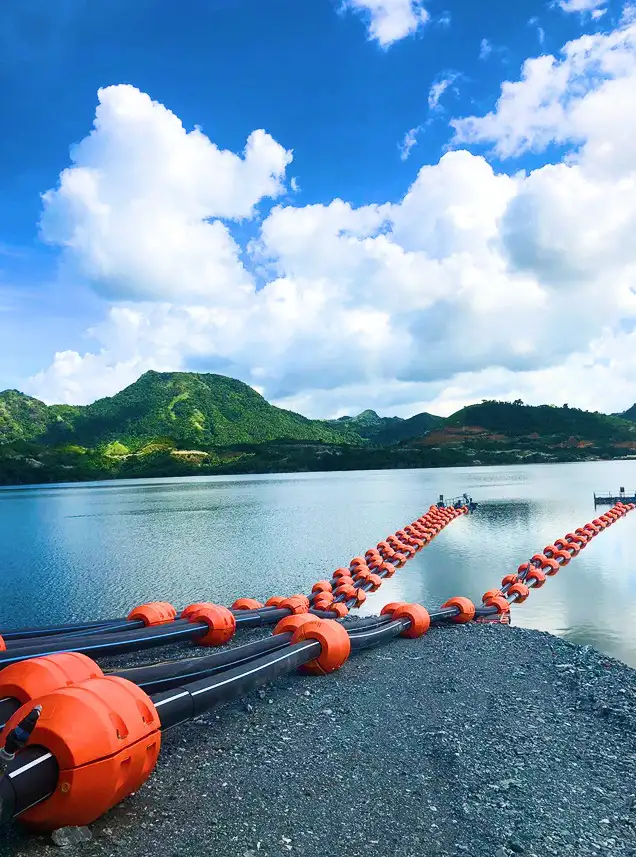HDPE pipe is a flexible plastic pipe made from high-density polyethylene, a thermoplastic polymer. It is known for its high strength-to-density ratio, making it lightweight yet incredibly durable. It is widely used for fluid and gas transfer in municipal, industrial, agricultural, and residential applications.
HDPE pipe is extremely versatile and is used for a wide range of applications, including: Potable Water Mains: Transporting drinking water. Sewer & Wastewater Systems: Gravity and force mains. Natural Gas Distribution: A primary material for gas lines. Industrial & Chemical Transport: Resists a wide range of chemicals. Irrigation & Agriculture: Mainlines and distribution lines. Geothermal Heating & Cooling: Ground source heat pump systems. Electrical & Fiber Optic Conduit: Protecting cables and wires. Mining & Slurry Lines: Abrasive and corrosive material transport.
Leak-Proof Joints: Heat fusion (butt, socket, electrofusion) creates a monolithic, permanently sealed system that is as strong as the pipe itself. High Durability & Flexibility: It can withstand significant pressure and stress without breaking. Its flexibility allows it to be installed in challenging terrains and makes it resistant to seismic activity. Corrosion & Chemical Resistance: HDPE is inert and does not rust, rot, or corrode. It is resistant to most acids, bases, and salts. Long Service Life: HDPE pipe systems are projected to last 50-100 years or more. Lightweight: It is much lighter than materials like ductile iron or concrete, reducing transportation and installation costs. Abrasion Resistance: It performs exceptionally well in transporting abrasive slurries.
SDR stands for Standard Dimension Ratio. It is a numerical value that represents the ratio of the pipe's outer diameter to its wall thickness (SDR = D/t). A lower SDR number means a thicker pipe wall, which translates to a higher pressure rating. A higher SDR number means a thinner wall and a lower pressure rating.
These are classifications for the grade of polyethylene resin used to make the pipe. The number indicates the material's long-term strength. PE100: A higher-performance material that allows for thinner walls (higher SDR) for the same pressure rating compared to older materials. It's the most common modern standard. PE4710: The North American designation, largely equivalent to PE100 in performance. It is the current standard for water and industrial applications in the US. PE80: An older generation material. While still used, PE100/PE4710 is preferred for new pressure applications due to its superior strength.
No, standard HDPE pipe is not recommended for hot water applications. Its pressure rating significantly decreases as the temperature rises. The maximum recommended service temperature is typically around 140°F (60°C) for low-pressure or non-pressure applications only. For hot water, other materials like PEX (Cross-linked Polyethylene) or CPVC are more suitable.
HDPE pipe is naturally susceptible to degradation from ultraviolet (UV) radiation. To counteract this, a minimum of 2% carbon black is added during manufacturing. This additive makes the black HDPE pipe highly UV resistant, allowing it to be stored and used outdoors for many years without significant damage. Non-black HDPE pipes are not UV stabilized and should be protected from direct sunlight.
The most common method is heat fusion, which melts the pipe ends and allows them to be permanently joined, creating a seamless, leak-proof system. The main types of heat fusion are: Butt Fusion: The most common method for pipes 2" and larger. Pipe ends are heated on a hot plate and then pressed together to form a permanent bond. Socket Fusion: Used for smaller diameter pipes (typically under 4"). The pipe and fitting are heated simultaneously and then pushed together. Electrofusion: Involves a special fitting with built-in heating coils. When an electric current is applied, the coils melt the inside of the fitting and the outside of the pipe, creating a strong joint. This is ideal for repairs and tight spaces. Mechanical Fittings: Flanges, couplings, and compression fittings can also be used to connect HDPE pipe to itself or to other pipe materials like steel or PVC.
Yes, absolutely. HDPE pipe is an ideal material for direct burial. Its flexibility allows it to conform to trench contours, and its durability and corrosion resistance ensure a long, maintenance-free life underground.
The flexibility of HDPE pipe is a major advantage. The allowable bend radius depends on the pipe's SDR, but a general rule of thumb is that it can be cold-bent to a radius of about 20 to 25 times its outside diameter. This allows for gradual directional changes without needing extra fittings.
The design life of HDPE pipe is conservatively estimated at 50 to 100 years. Its resistance to common failure mechanisms like corrosion, chemical attack, and fatigue means it often outlasts the projects it's installed in.
For many modern applications, yes. HDPE is superior in terms of corrosion resistance (it doesn't need coatings), joint integrity (fusion joints don't leak), and flexibility. Ductile iron is very strong but is heavy, susceptible to corrosion, and its gasketed joints can be potential leak points over time.
Yes. HDPE pipe that is certified to NSF/ANSI 61 standard is approved and widely used for potable (drinking) water systems. The material does not leach harmful chemicals into the water and is resistant to biofilm buildup, ensuring clean and safe water transport.
